WWII Mariana Islands Campaign "Saipan, Tinian, Guam" : NACI-HO Pacific Theater Survival Cloth Chart Map



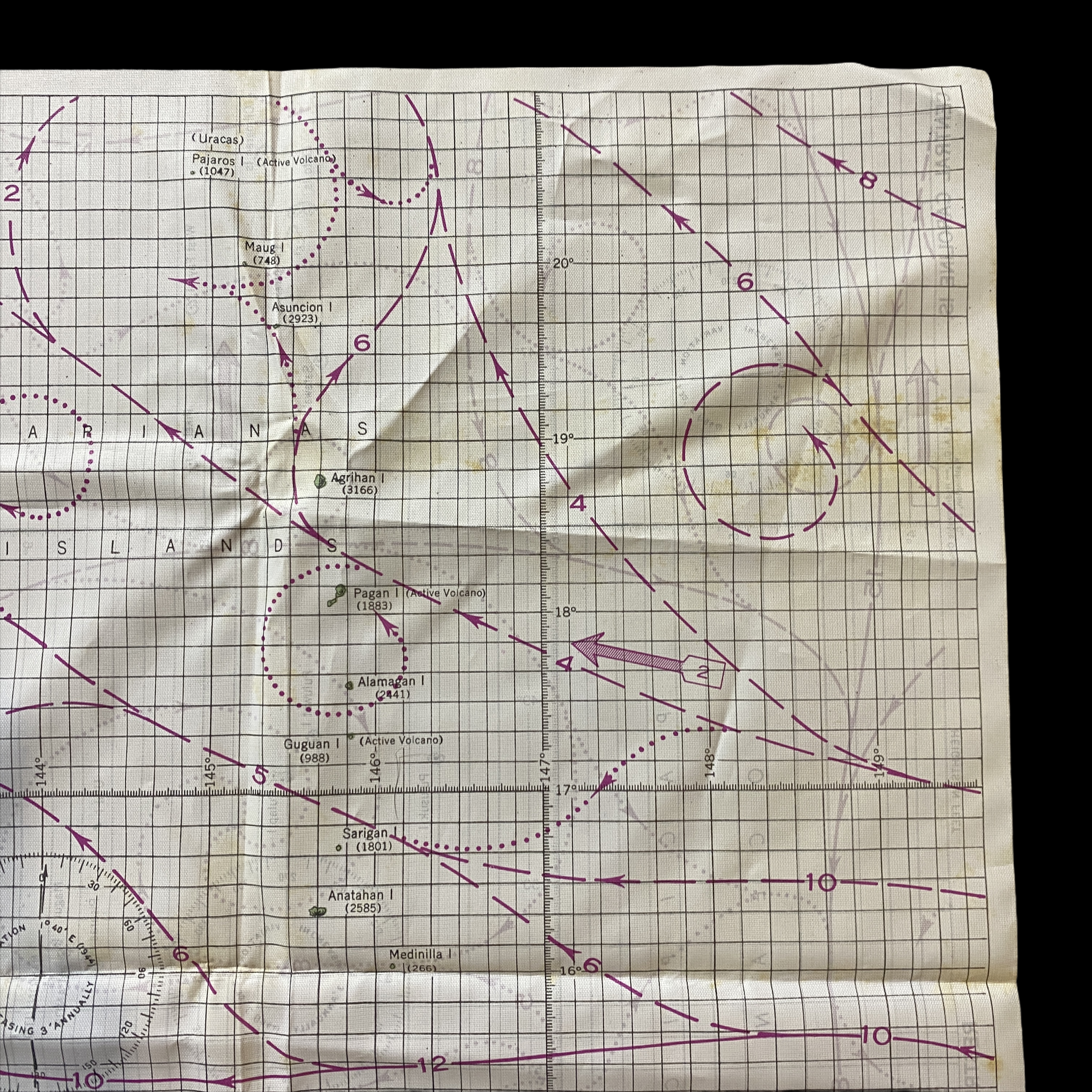
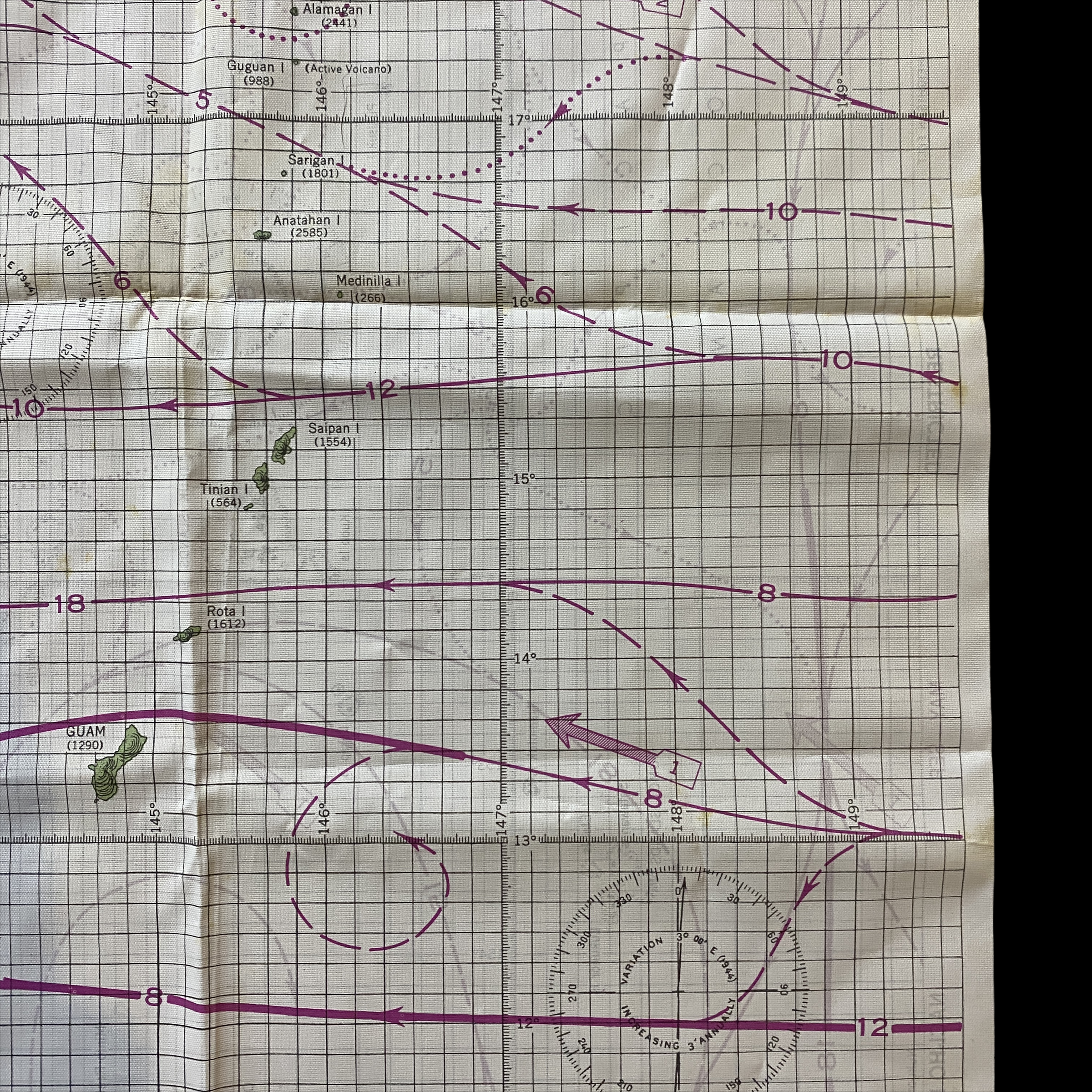
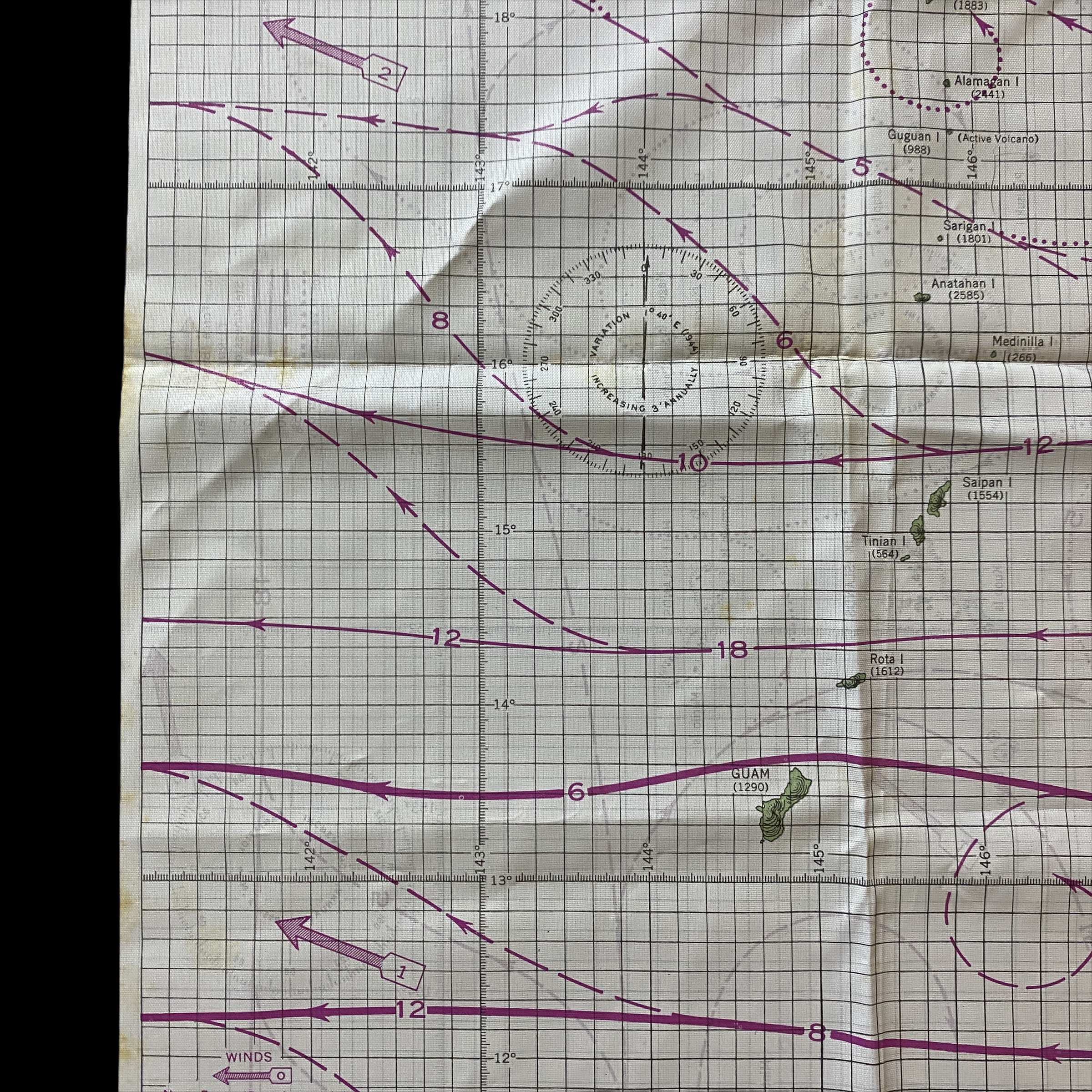
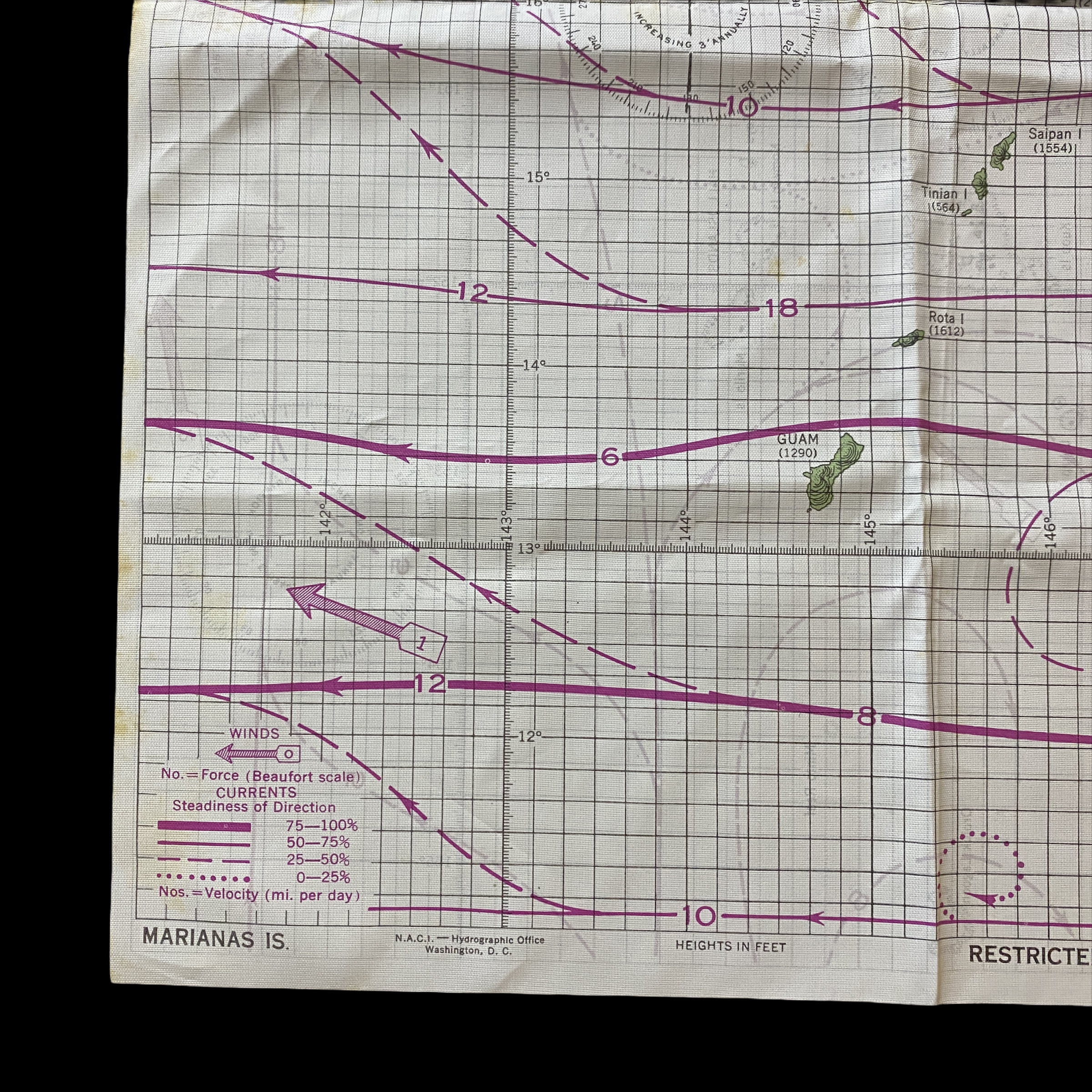

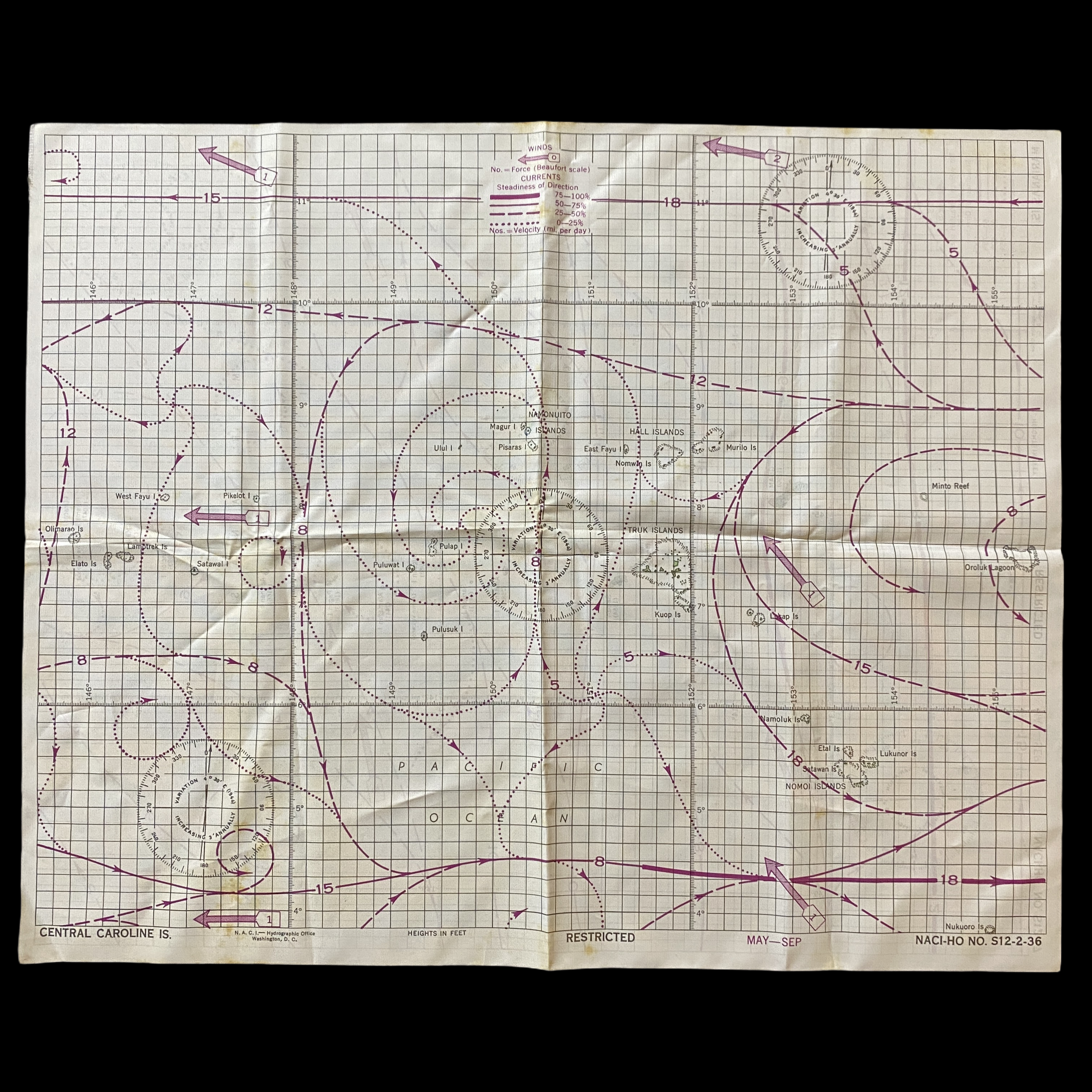
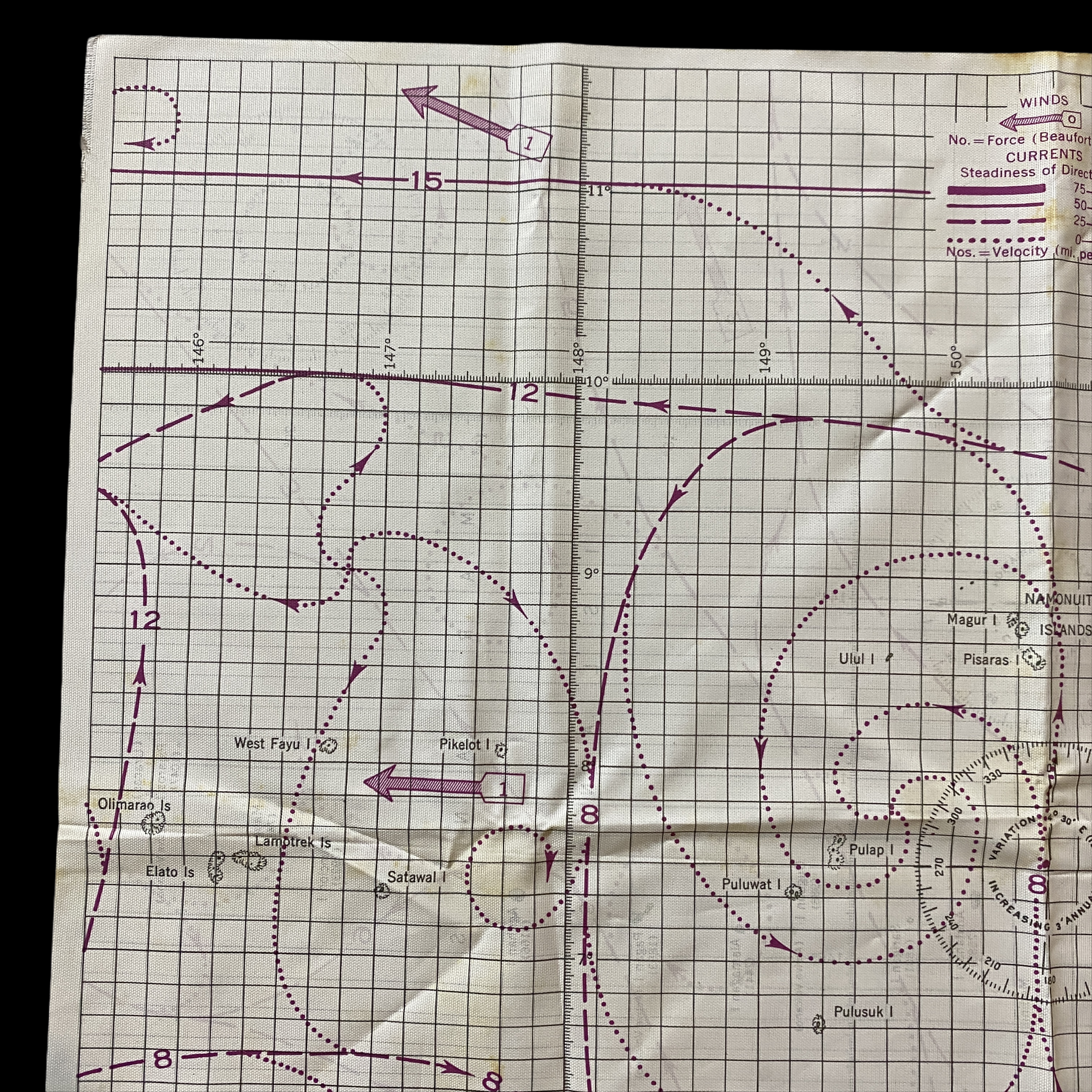


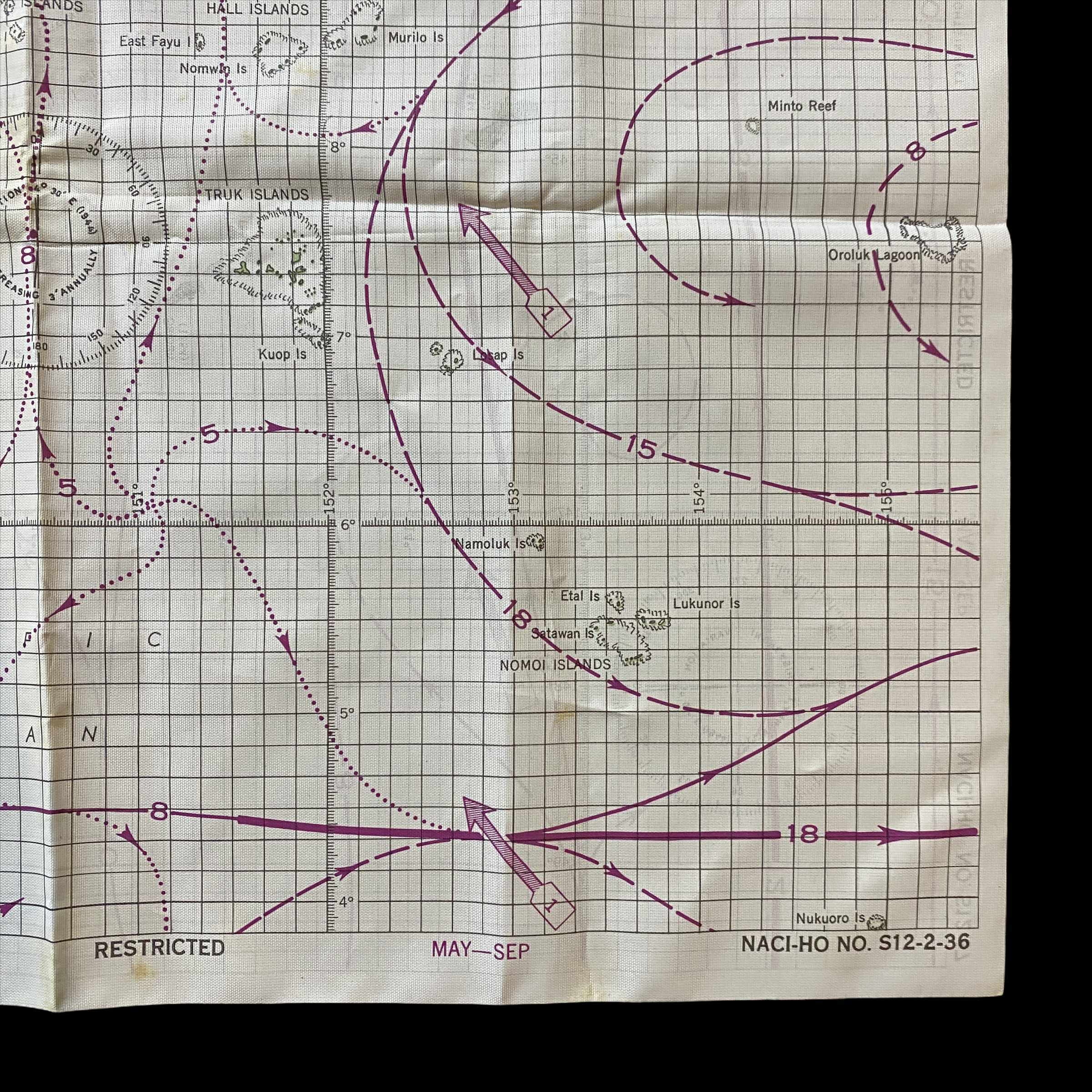


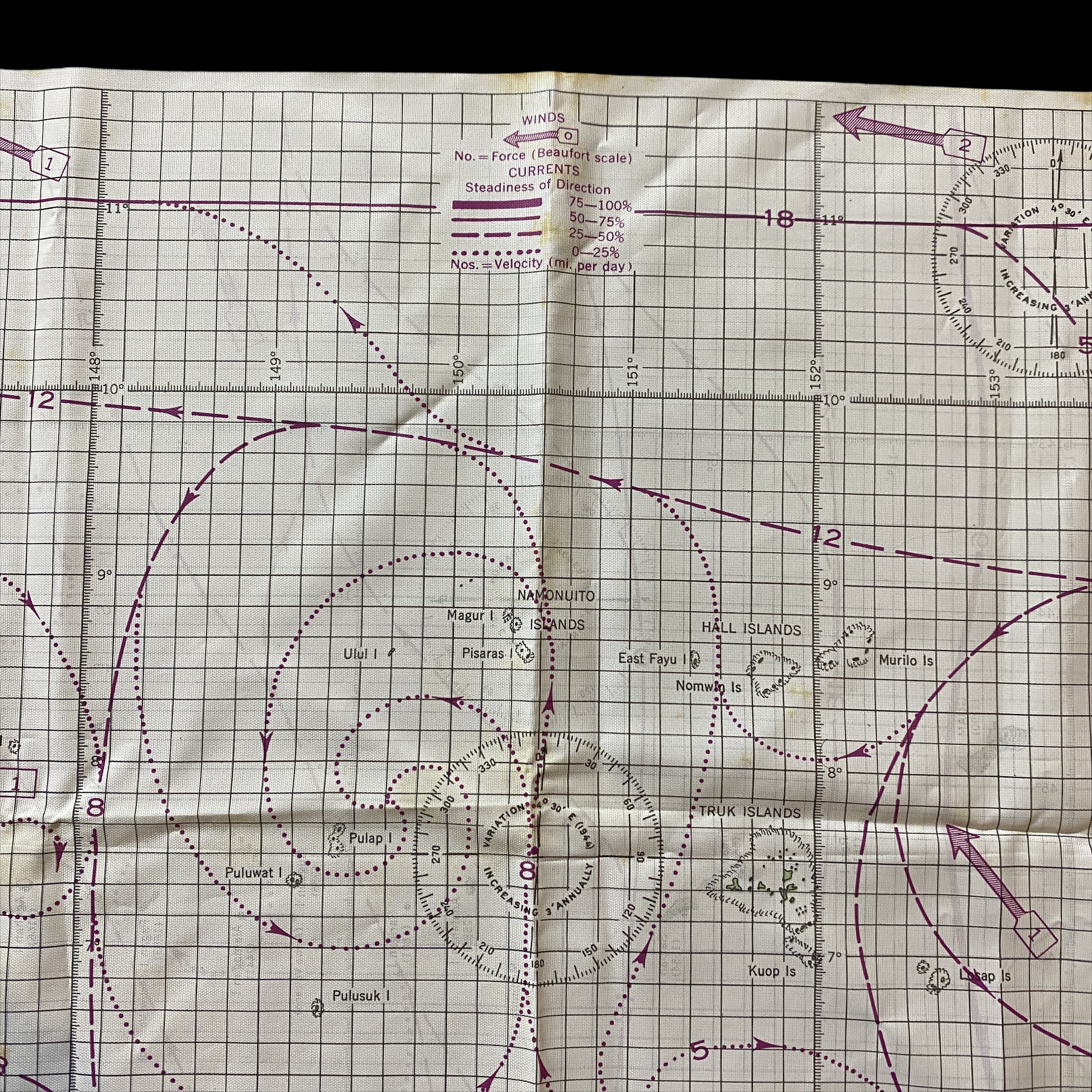
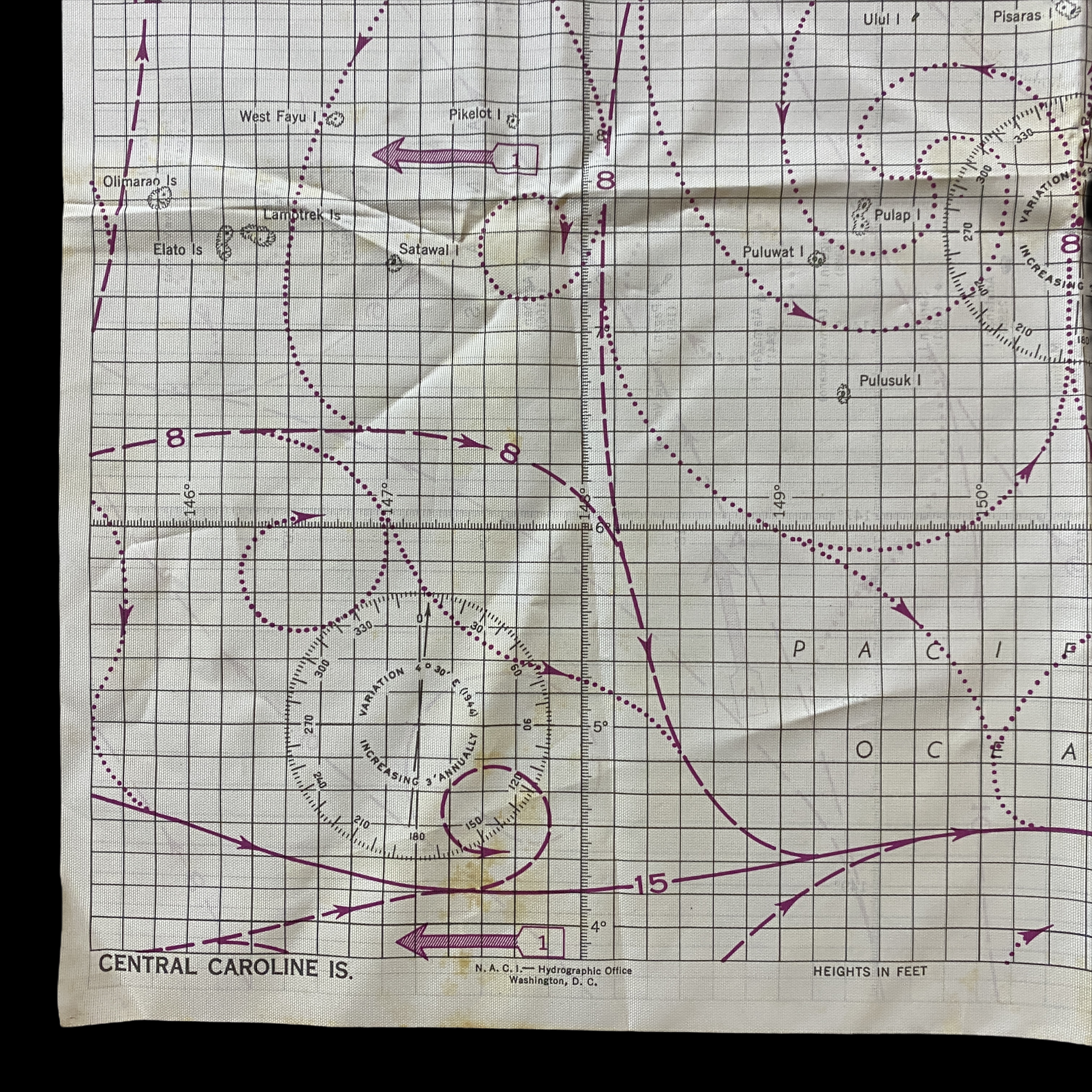



WWII Mariana Islands Campaign "Saipan, Tinian, Guam" : NACI-HO Pacific Theater Survival Cloth Chart Map
Size: 12.5 x 15.5 inches
This original NACI-HO Pacific Theater survival cloth chart was prepared through the collaboration of the US Navy Hydrographic Office (Op-28) and the Air Intelligence Group of the Division of Naval Intelligence (Op-16-V). The Navy handkerchief charts, so called because of their size that resembled a handkerchief, were designed primarily for use by Navy and Marine pilots operating from carriers or island bases and were intended for use in the event of a forced sea landing and as an aid in the navigation of rubber life rafts. This chart collection comes from the same pilot who flew combat missions and carried these while operating in the Pacific Theater against the Japanese forces.
This map is titled ‘Marianas Islands’ and on the reverse ‘Central Carolina Is’. The map is meant to be waterproof and specifically features some of the most notable islands of the Pacific Theater that saw intense air combat, naval, and air fighting such as….
Saipan
Tinian
Guam
Turk Islands
The Mariana and Palau Islands campaign, also known as Operation Forager, was an offensive launched by United States forces against Imperial Japanese forces in the Mariana Islands and Palau in the Pacific Ocean between June and November 1944 during the Pacific War.The United States offensive, under the overall command of Chester Nimitz, followed the Gilbert and Marshall Islands campaign and was intended to neutralize Japanese bases in the central Pacific, support the Allied drive to retake the Philippines, and provide bases for a strategic bombing campaign against Japan.
The United States invasion force was supported by a massive combat force. The Fifth Fleet was commanded by Vice Admiral Raymond A. Spruance. Task Force 58, commanded by Vice Admiral Marc Mitscher, consisted of 15 carriers, 7 battleships, 11 cruisers, 86 destroyers and over 900 planes. The invasion force, commanded by Vice Admiral Richmond Kelly Turner, consisted of 56 attack transports, 84 landing craft and over 127,000 troops.
Beginning the offensive, United States Marine Corps and United States Army forces, with support from the United States Navy, executed landings on Saipan in June 1944. In response, the Imperial Japanese Navy's Combined Fleet sortied to attack the U.S. Navy fleet supporting the landings. In the resulting aircraft carrier Battle of the Philippine Sea (the so-called "Great Marianas Turkey Shoot") on 19–20 June, the Japanese naval forces were decisively defeated with heavy and irreplaceable losses to their carrier-borne and land-based aircraft.
U.S. forces executed landings on Saipan in June 1944 and Guam and Tinian in July 1944. After heavy fighting, Saipan was secured in July and Guam and Tinian in August 1944. The U.S. then constructed airfields on Saipan and Tinian where B-29s were based to conduct strategic bombing missions against the Japanese mainland until the end of World War II, including the nuclear attacks on Hiroshima and Nagasaki.
In the meantime, in order to secure the flank for U.S. forces preparing to attack Japanese forces in the Philippines, in September 1944, U.S. Marine and Army forces landed on the islands of Peleliu and Angaur in Palau. After heavy and intense combat on Peleliu, the island was finally secured by U.S. forces in November 1944.
Following their landings in the Mariana and Palau Islands, Allied forces continued their ultimately successful campaign against Japan by landing in the Philippines in October 1944 and the Volcano and Ryukyu Islands beginning in January 1945.
The background color of the charts is white with cultural features in black and land masses in green. The map does not include the more elaborate elevation tints common on many AAF maps, although they do include rough elevation contours lines. At the October 1943 conference, the Navy representative agreed to also include the inland cultural features on the charts for the benefit of the Thirteenth Air Force, which also operated in the areas covered by the charts. The charts are all made on the standard Mercator projection and were printed on rayon acetate.
To expedite their initial distribution, a minimum quantity (1,300 copies each) of the first six, double-sided charts were distributed to aviation units of the Pacific Fleet in the winter of 1944 without current and wind data because the data was not available in the form required at that time. The first six charts issued were: (1) S12-20&16 / S12-9&26, (2) S12-11 / S12-8, (3) S12-1&25 / S12-23&25, (4) S12-19 / S12-2, (5) S12-14 / S12-2, and (6) S12-21 / S12-29&22.
WHAT THE CHARTS SHOW …
The streamline on the handkerchief charts show the average current near the surface. The arrows on the streamlines indicate the average direction of flow, and the numbers indicate the average speed of the current in nautical miles per day.
The heaviness of the streamlines shows the steadiness of the current, that is, the percentage of the time that the current actually flows in the average direction. The heavier and more solid the line, the more you can rely on the current which it shows.
The shaded arrows on the charts give the average wind direction for each area. The numbers on the arrows show the average Beaufort force of the wind.
The direction and speed of the current will vary somewhat with wind force and direction. When the wind has been blowing for several hours, with the direction and force indicated by the arrow nearest your position, the current will flow about as shown on the chart. If the wind has been blowing in a different direction or at a different speed, the actual current will be a combination of that shown on the chart with the current set up by the wind.
Currents near shore will usually differ in speed and direction from those prevailing offshore. Such currents nearly always flow parallel to the beach and are mainly due to the tide, that is, they fluctuate in speed and often reverse direction every 6 or 12 hours.